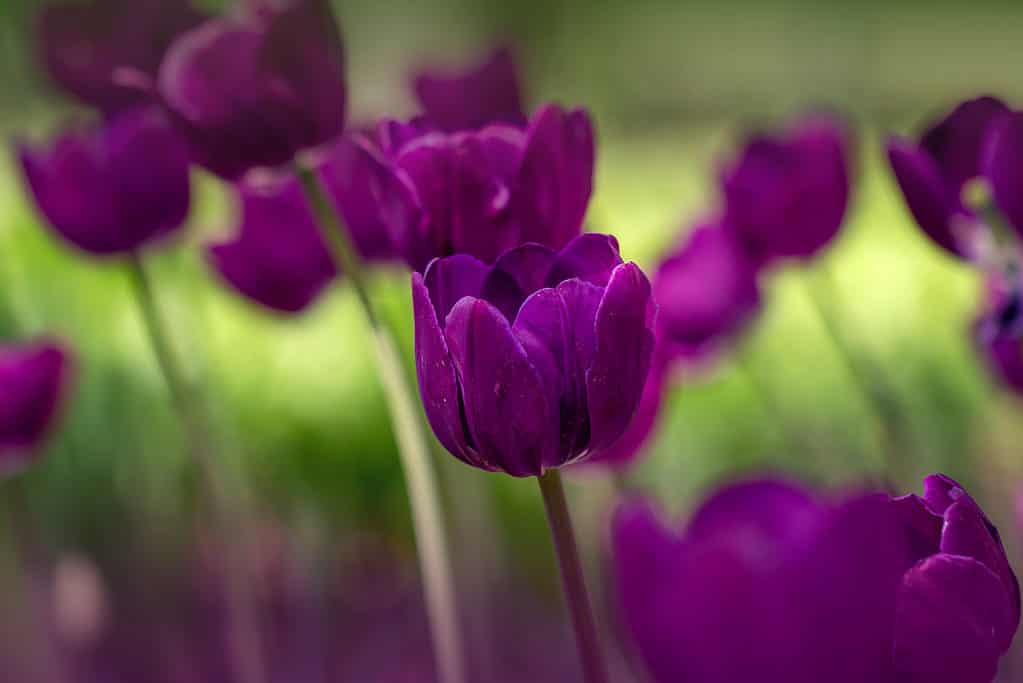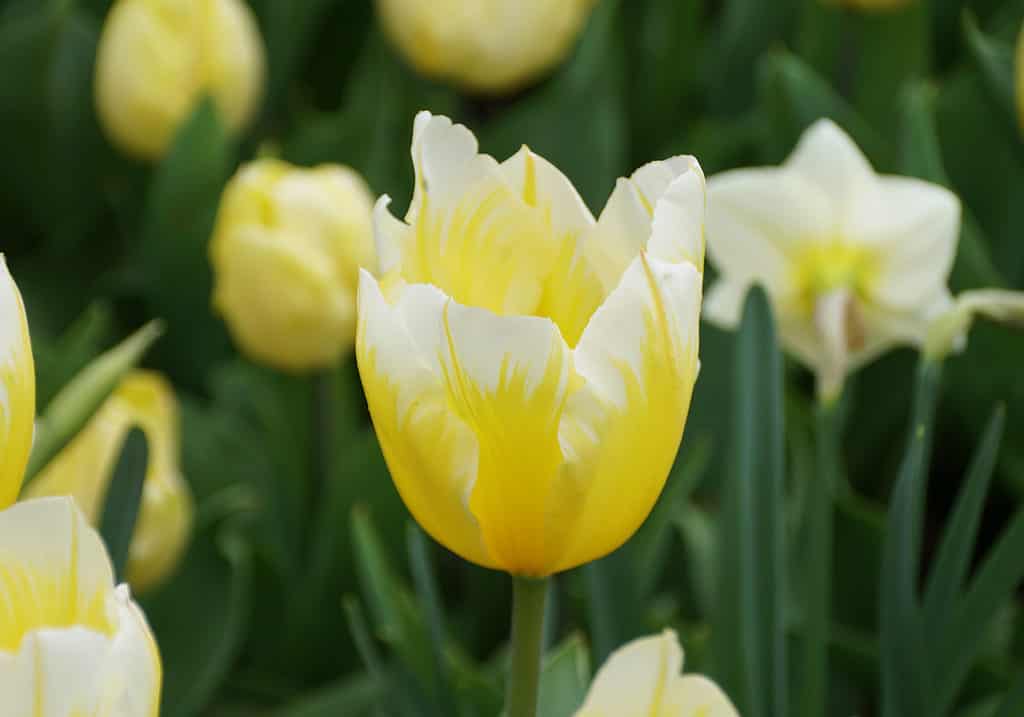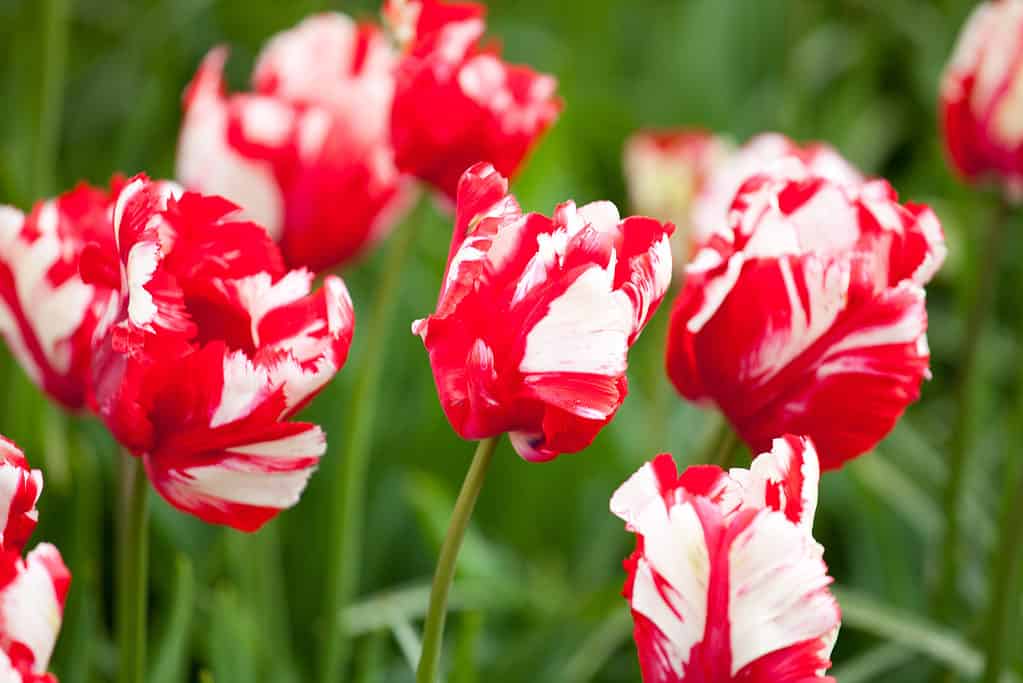This article is dedicated to the wonderful tulips found throughout Washington State. Known for its enormous tulip festival, Washington State is the perfect place to grow and admire these gorgeous flowers. We’ll discuss the best types of tulips to cultivate in the state and provide advice on caring for them to ensure they stay beautiful all season.
So, grab a cup of tea, and let’s start learning everything about growing tulips in Washington State!
Gardening Climate
Washington state has two distinct regions. The western part of the state is a temperate rainforest, and the eastern part of the state is a semiarid desert.
The gardening climate in the western half of Washington is generally mild and wet. Temperatures range from a low of around 20 degrees Fahrenheit in winter to a high of 80-90 degrees Fahrenheit during the summer. The average annual rainfall is between 40-50 inches, although it can vary significantly depending on location. Most areas receive at least some snowfall every year. This makes for excellent conditions for many types of plants, including tulips which are particularly well suited to the Pacific Northwest climate.
The gardening climate in eastern Washington is ideal for growing a wide variety of plants and vegetables. The region experiences hot, dry summers with temperatures ranging from the mid-80s to low-90s during the day but cool evenings that drop into the 40s and 50s at night. Winters are cold, with temperatures falling below freezing for several months. Rainfall is light in this semiarid region, averaging around 8 inches annually, making supplemental irrigation necessary for most gardens. The soil in eastern Washington varies widely and can range from sandy loam to heavy clay, depending on where you live. Tulips specifically require slightly acidic soil, so they thrive in this part of Washington State!
8 Types of Tulips to Grow in Washington
Selecting the best tulip bulbs to plant can be difficult since they all look beautiful! These spring-blooming bulbs have various colors, ranging from classic flowers to petal-filled peony tulips and frilly parrot types. Why not plant a different variety every year and collect them all? Consider these popular tulips for an amazing spring display.
Negrita

©Indra Artelt/Shutterstock.com
Tulipa Negrita is a deep purple color and looks fantastic mixed with orange or yellow tulip varieties. It is a tough cookie and can withstand wind and rain without losing petals. This tulip is a mid-blooming variety, so expect these flowers to arrive in April. They grow 16 inches tall and are hardy in USDA zones 3-8.
Prinses Irene
Tulipa Prinses Irene is a stunning combination of warm purple and soft orange petals. It looks great when planted alongside purple tulip varieties. This tulip has a strong spicy floral scent and makes a wonderful cut flower. This tulip blooms in early April and prefers a sunny location. It grows 14 inches tall and is hardy to USDA zones 3-8.
Sweetheart

©Khairil Azhar Junos/Shutterstock.com
Tulipa Sweetheart is known for its gigantic flowers. It has yellow petals with white tips that are long-lasting and fragrant. This tulip blooms in April and May and enjoys a sunny position. It is 18 inches tall and hardy in USDA zones 3-8.
Zurel
Tulipa Zurel is streaked with deep purple and bright white. It has strong stems sturdy in the wind and rain of spring. The flower lasts a long time, making it a desirable cut flower. This tulip grows to 20 inches tall, blooms in late April and early May, and is hardy between zones 3-8.
Unicum

©Nick Pecker/Shutterstock.com
Tulipa Unicum is a bright orange-red tulip that makes a striking statement in the garden. The foliage is striped with white and looks great in a vase. This variety is known for being reliable and long-lived, coming back for many years in a row. It blooms in April, is 12 inches tall, and is hardy to USDA zones 3-8.
Fusilier
This bright orange tulip grows up to four flowers per stem! Each flower has frilly edges that look fancy and elegant in a vase. They are 12 inches tall and bloom in April. They prefer a location with 8 hours of sun per day and well-draining soil.
Estella Rijnveld

©blue caterpillar/Shutterstock.com
Estella Rijnveld is another frilly-petalled tulip. The edges of each white and red striped petal look like they have fringe. The blooms are large and stay on the stem for a long time, making them a highly sought-after cut flower. They are a bit delicate in inclement weather, so take care to cover them during storms. They bloom in April and May, grow 24 inches tall, and like plenty of sunshine.
Montreux
Montreux tulips look more like roses or peonies than tulips! The double flowers are thick with petals in a luscious pale yellow. They are early bloomers and will surprise you by flowering as early as March. They grow 18 inches tall and are hardy to USDA zones 3-8.
How, When, and Where to Plant
If you want to grow tulips in Washington State, you should plant the bulbs in October or November before the first frost. If you didn’t manage to do that, don’t worry, you could still buy potted tulips that are already in bloom. You can enjoy them in the pot and then transplant them into your garden when their leaves start to turn yellow.
Tulips grow best in an environment with plenty of sunlight, loose soil, and good drainage. For an aesthetically pleasing look, plant them in groups of 5 to 9. It’s recommended to space them out and avoid planting them in lines.
Bury the bulbs about 6 inches deep with the pointed side facing up and the roots pointing down. Mark the spot where you planted it and cover it with a layer of mulch like leaves, peat moss, or pine needles to protect it during the cold season.
Most gardens in the Pacific Northwest have good soil for planting tulips, but adding compost or using a specialized fertilizer for flower bulbs can give them the best chance of success.
The lawn grass under a deciduous tree is a great location if you want to naturalize tulips in large quantities. The naked tree branches will let plenty of light through, and by the time the tulip foliage has died back, you’ll be able to mow around the area in the late spring.
Protection From Wildlife

Pink Menton tulips blooming in a garden.
©Nanzyprom/Shutterstock.com
If you live in an area of Washington with deer, elk, or moose, you probably know that tulip foliage and flowers are a favorite snack for these animals. Rabbits will also eat the foliage if there isn’t anything better to munch on. You can try hanging your tulips in a basket near a window or planting fritillaria imperialis nearby which deer and squirrels don’t like. Planting strong-smelling plants near your tulips, like garlic, chives, or onion, could also help protect them. If the animals are still persistent, you can replace your tulips with daffodils, which all animals avoid because they are poisonous.
To keep diggers like moles, voles, rats, and mice from consuming your tulip bulbs, try encasing each bulb in wire before planting. To deter chipmunks and squirrels from digging up your bulbs, you can plant them in a wire cage or surround them with a layer of sharp gravel.
Do I Need To Dig Them Up?
In Washington State, removing your tulip bulbs from the ground is unnecessary. Tulips tend to be hardy and can give a few years of blooms without any extra attention. To keep your garden looking vibrant, you may supplement your existing tulips with fresh bulbs each year. Mulch should be added at the end of the year for optimal growth, but that’s usually all the maintenance they need.
Where to See Them?

Red and yellow kaufmanniana tulips in bloom.
©Orest lyzhechka/Shutterstock.com
Explore the magical Skagit Valley, home to the second-largest tulip festival in the USA! Here you’ll find four farms boasting fields of vibrant tulips, display gardens, unique experiences, and exciting events. Historically, the tulip has been a symbol of paradise on earth, and we invite you to experience the modern-day version during the Annual Skagit Valley Tulip Festival in April!
The Skagit Valley Farmers welcome people to come and check out the picturesque views while driving through the area as they take in the Skagit Valley Tulip Festival and the farming activities that take place year-round. Did you know that farming is the top business in Skagit County? It produces more tulip and daffodil bulbs than any other county in the United States.
Agricultural production in Washington State’s Skagit Valley is valued at a staggering $261 million and covers 93,000 acres of land. This land is used to create food, flowers, and fiber products and as a habitat for thousands of snow geese, swans, and many species of ducks.
A Summary of 8 Tulips That Thrive in Washington State
- Negrita
- Prinses Irene
- Sweetheart
- Zurel
- Unicum
- Fusilier
- Estella Rijnveld
- Montreux
NEXT UP…
- Discover the Coldest Place in Washington State
- 10 Towering Trees Native to Washington State
- The Flag of Washington: History, Meaning, and Symbolism
The photo featured at the top of this post is © blue caterpillar/Shutterstock.com
Thank you for reading! Have some feedback for us? Contact the AZ Animals editorial team.






